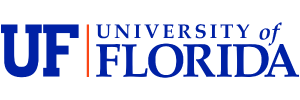HuBMAP Infrastructure, Visualization & Engagement
A Computational IMage Analysis Platform (CIMAP) for HuBMAP


Abstract
Advancement in high-resolution microscopy has revealed unprecedented opportunities to spatially investigate cells and tissues at the sub-micron level via molecular imaging of gene transcripts, proteins, and metabolomes. Parallel advances in computer-based hardware technologies and artificial intelligence (AI)/machine learning (ML) also offer a vehicle to study such multi-omics data in high dimensionality. An outstanding challenge involves combining and thoroughly understanding thesedata in various domain applications, including: basic science, clinical or preclinical studies using model systems, clinical diagnosis, prognostication, and drug discovery. The Human BioMolecular Atlas Program (HuBMAP) Consortium is an ideal avenue for generating high-resolution multi-omics data at single-cell resolution using various spatial molecular omics technologies. A common imaging modality connecting these data types is brightfield histology microscopy, an inexpensive method for integrating the aforementioned multi-omics data with clinical decision making. This HIVE Tools proposal aims to develop and implement novel ML pipelines to predict cell types and/or states from brightfield histology images using spatial protein- and/or RNA-based technology data with concurrent brightfield histology. This will enable the use of these spatial omics data as a bridge to link histology with high-content single-cell data sets and thus create a single exploration space from histology to biomolecules in distinct cell types.
The proposed computational pipeline will be developed using specific data collected via HuBMAP or the HIVE team using CODEX and spatial transcriptomics. We will demonstrate mapping of cell types and states to brightfield histology images on the same section from which the molecular data are generated, on the independent adjacent section via registration, and on an independent validation tissue section. Performance of this pipeline will be validated using kidney tissue data. The option of applying this approach to other HuBMAP organs, including lymph node, skin, liver, and lung, will be explored. We will also develop scalable graphics of detected cell types using our pipeline, with a larger goal of developing an ontological framework integrating atoms to anatomy for an objective understanding of variability in the reference human atlas. We will work with other HIVE teams to integrate the developed pipelines and tools with the HuBMAP Portal as a simple plug-and-play end-user plugin. It will be openly accessible to quantify cell counts, types, features, and states by uploading brightfield histology tissue images to the portal. Our innovative translational science team’s model will recruit underrepresented minority students in STEM from biology and engineering disciplines to provide them a mentorship environment and scientific opportunities within our team and that of collaborators.
Public health relevance statement
Brightfield histology imaging of tissues is inexpensive and commonly used in clinical assessments globally. Our proposed tools will allow quantifying cell types, numbers, morphology, and states from brightfield histology images. Success of this project will empower clinicians to deduce molecular understanding of single cells from brightfield tissue histology for clinical assessment.
Fast Facts
| Project title: | A 3D Tissue Map of the Human Lymphatic System |
| Organ specialty: | Lymphatic system |
| PI: | Pinaki Sarder, University of Florida |
| Co-Investigator: | Sanjay Jain, Washington University in St. Louis |
| Grant number: | 1OT2OD033753-01 |
